- Introduction
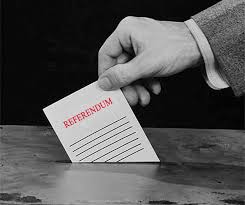
“A referendum is a directed vote in which the entire electorate is asked to vote on a particular [issue or] proposal” that is before the public.[1] In other words, a referendum is the “practice of submitting to popular vote a measure passed on or proposed by a legislative body[, usually local or state legislative body,] or by popular initiative” by the citizens of a community, locality, or state.[2] “A referendum can be binding or advisory,” and can be initiated voluntarily through the legislature or government, through citizen action, or as may be mandatorily prescribed by law.[3] “Referendums are an expression [by the people] of [a] direct democracy.”[4]
Thus, a referendum is a measure that is referred (i.e., that is sent on) to the people as a ballot measure.[5] The passage of a ballot measure pursuant to a referendum “may result in the adoption of a new law.”[6]
Referendums to determine the populace’s acceptance of sports facility developments has been a popular vehicle to give political cover to elected officials with respect to spending money on sports teams and facilities over the last few decades. Marquette University Law School’s Sports Facility Reports outline in detail referendums that have been held with respect to the issue of public contribution to stadium facilities in all sports. San Diego is a recent example of a referendum put on the ballot to be voted on by the people of San Diego. But with the recent defeat by the San Diego electorate of the referendum to contribute to the funding of a new stadium for the San Diego Chargers (Chargers), how referendums have been circumvented and how they have been used in the last five years should be examined.
- Green Bay Packers
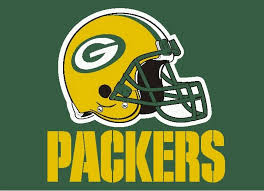
The Green Bay Packers (Packers) are a National Football League (NFL) team located in Green Bay, Wisconsin.[7] With a census population as of 2015 of 105,207 people, Green Bay is the NFL’s smallest market team.[8] Green Bay is located in Brown County, Wisconsin and the Packers play their home games at historic Lambeau Field.[9] The Packers are a storied franchised and an anomaly in comparison to other professional sports teams. In 1919, a year before the NFL was created, the Packers were organized.[10] “With its record number of 1[3] championships, the Packers are the Yankees of pro-football.”[11] Green Bay, Wisconsin is the Green Bay Packers. “In 2000, the Packers reported an operating loss of $419,000,” but also asked for a long overdue renovation of historic Lambeau Field, a project envisioned to cost around $295 million.[12] Of that $295 million, “$135 million would be paid for by the Packers” through “a one-time ‘personal seat license’ fee,”[13] a loan from the NFL, and proceeds received from a Packers’ Stock Sale.[14] The remainder was to be publically financed through a request for an increase of 0.5% to the Brown County sales tax.[15] The renovation contemplated “a retro facelift:”[16] “a 5-story red brick and green wrought iron atrium called Titletown on the east side of Lambeau Field . . . [to] include the Packers Hall of Fame, a stadium club and retail space,”[17] Packer Pro-shop, and 10,000 additional seats, which increased the seating capacity to 71,000.[18]
In order for this renovation and update to be accomplished, “the state legislature of the State of Wisconsin [had] to grant Brown County the authority to implement the additional sales tax.”[19] After the granting of such authority, Brown “[C]ounty officials [then had] to authorize a referendum.”[20]
September 2003 was the target date for the completion of the renovation process.[21] A “[Wisconsin] Fiscal Committee . . . estimated it would cost the average citizen about 13 cents a day, [or] about $46.00 a year,” to support the tax for the renovation of Lambeau Field.[22] “That mean[t], for example, that someone buying a $25 snow shovel in [Brown] County w[ould] pay 13 cents more in sales taxes” than someone who bought the same shovel outside of Brown County.[23] “For all of Lambeau Field’s sellouts[, for long season ticket waiting lists, and] for all the area’s devotion to the Packer legend, not everybody [wa]s a Packer[-tax] Backer.”[24] Located in northern Wisconsin, “Green Bay is a conservative, blue-collar area where some resent ‘taxation without representation,’ the words that fostered the Declaration of Independence. Even when the tax would help the[ir beloved] Packers.”[25] Tim Hinkfuss, then Chairman of the Board of Brown County, indicated “the county sales tax has been a very sensitive issue in Brown County. . . . people don’t like taxes period.”[26] Another member of the Brown County Board, Jim Schmitt, noted that passage of the county sales tax would be a ‘tall order. . . . There is a lot of work that needs to be done on this. I don’t think this is something we are going to jump at and embrace.”[27] Former Governor Tommy Thompson stated “[i]t’s the right thing for us, it’s right for Green Bay . . . it’s right for our future.”[28] The sentiment that Packers fans love their Packers and hold themselves out as die-hard fans while at the same time being opposed to any public financial support of the Packers clearly appeared in a cartoon from the February 6, 2000 Crossroads section of Milwaukee Journal Sentinel about the Packers’ request for public assistance:[29]
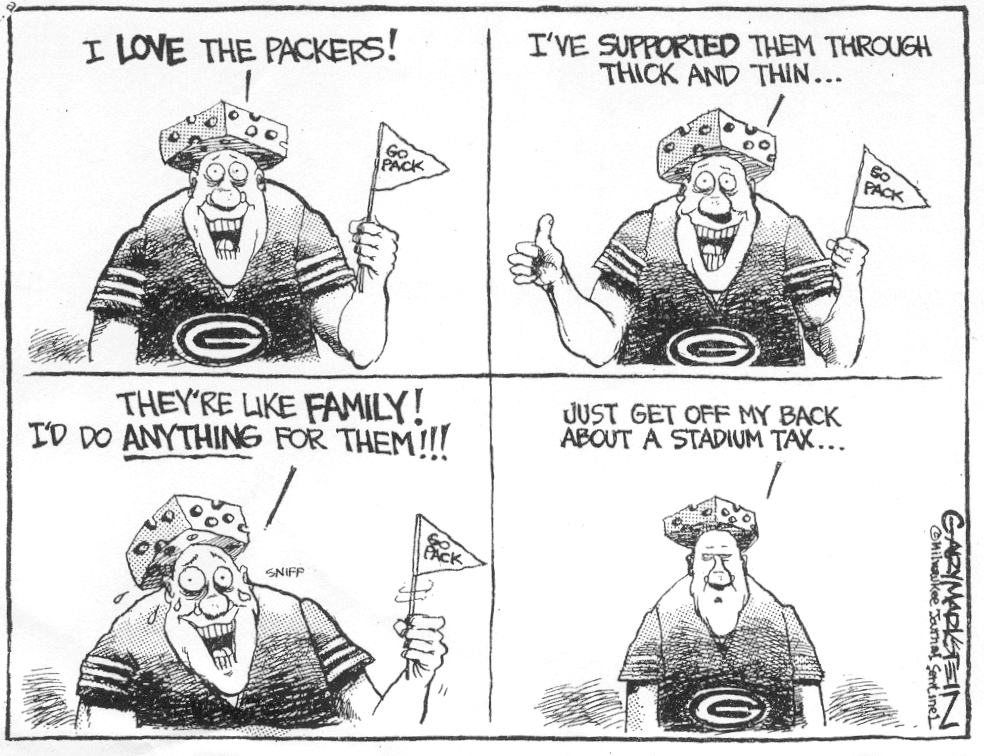 So at the time, September of 2000, “voter[] approval of a half-cent sales tax [wa]s as up in the air as a field-goal kick.[30] Bob Harlan, then Packers’ Chief Executive Officer, said, “It’s very tight, it could go either way,” when commenting on the local polls and surveys concerning the tax.[31] Harlan continued, “[t]he word ‘tax’ bothers some people.”[32] The Packers “expend[ed] vast sums of money campaigning [to pass the 0.5% sales tax].”[33] In fact, “the Milwaukee Journal Sentinel reported in its November 1, 2000 edition that the campaign finance arm of the Green Bay Packers spent $858,000 to win voter approval for the redevelopment of Lambeau Field[, a]dded to $568,000 in lobbying expenses at the state level [that was spent] to get the sales tax referendum before the Brown County voters . . . [In total,] the Packers spent more than $1.42 million on the referendum.”[34]
So at the time, September of 2000, “voter[] approval of a half-cent sales tax [wa]s as up in the air as a field-goal kick.[30] Bob Harlan, then Packers’ Chief Executive Officer, said, “It’s very tight, it could go either way,” when commenting on the local polls and surveys concerning the tax.[31] Harlan continued, “[t]he word ‘tax’ bothers some people.”[32] The Packers “expend[ed] vast sums of money campaigning [to pass the 0.5% sales tax].”[33] In fact, “the Milwaukee Journal Sentinel reported in its November 1, 2000 edition that the campaign finance arm of the Green Bay Packers spent $858,000 to win voter approval for the redevelopment of Lambeau Field[, a]dded to $568,000 in lobbying expenses at the state level [that was spent] to get the sales tax referendum before the Brown County voters . . . [In total,] the Packers spent more than $1.42 million on the referendum.”[34]
On September 12, 2000, voters exercised their rights and approved a binding referendum to increase the sales tax in Brown County by a vote of 53% in favor and 47% opposed.[35] What follows is the ballot information from said referendum:
Posed to voters on Sept. 12, 2000, with a 56 percent voter turnout.
Question 1: Shall a sales tax and use tax be imposed at the rate of 0.5% in Brown County for purposes related to football stadium facilities in the Green Bay/Brown County Professional Football Stadium District?
Yes – 48,788 No – 42,580
Question 2: Shall excess revenues from the half-cent sales tax and use tax be permitted to be used for property tax relief purposes in Brown County?
No – 49,948 Yes – 40,475
This would have increased the tax to as much as $900 million, which the City of Green Bay needed to balance its budget.[36]
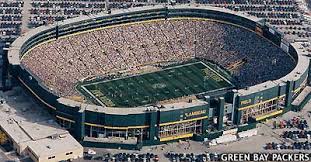 Of all places, you would think that a tax referendum in Green Bay, Wisconsin in support of the Packers would be a drop-dead assured victory, but it was not so. Bob Harlan has said:
Of all places, you would think that a tax referendum in Green Bay, Wisconsin in support of the Packers would be a drop-dead assured victory, but it was not so. Bob Harlan has said:
I have personally spoken with countless voters, both supporters and opponents. I am personally grateful to all those who chose to vote “yes.” But the concerns of those who opposed this project were also a constructive part of the referendum process. I respect the honest opinions of those who voted “no.”
Although the referendum caused great debate, it is certainly true that all voters, in their hearts, want a strong team and a vibrant community.
Now, let’s work together. Let’s channel the energy from the campaign to move ahead as we repair and improve the greatest stadium in professional sports. Together, we will rebuild a stadium that will strengthen the Packers and Brown County.
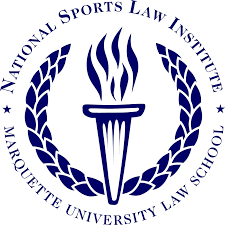
Preserving Lambeau Field will be a lasting accomplishment and a tribute to the great spirit of our fans.[37]
- Sports Facility Reports – Other Referendums
Since the Green Bay referendum in 2000, the NFL has experienced six other referendums as reported by Marquette University Law School’s Sports Facility Reports:[38]
| Market | Facility (Teams) | Year | Result | Taxpayer Costs | Additional Projects | Open |
| Phoenix | University of Phoenix Stadium (Cardinals) | 2000 | Passed
(51%) |
$1.8 billion plan funded by increased hotel and car rental taxes. The overall cost was $455M and the Arizona Sports & Tourism Authority provided $300.4M for the construction. | $200M to renovate Cactus League facilities; immediate doubling of Arizona tourism budget, improvements in statewide youth sports facilities. | 2006 |
| Dallas | AT&T Stadium (Cowboys) | 2004 | Passed (55%) | In April of 2004, residents of Arlington Texas approved a 0.5% sales tax increase, 2% hotel‐motel tax increase, and a 5% rental car tax increase to provide $325M in funds to go towards the $1.3B stadium. | – | 2009 |
| Kansas City | Arrowhead Stadium (Chiefs) | 2006 | Passed (53%) | Voters agreed to a 3/8 cent sales tax increase to help fund $525M in stadium renovations for Truman Sports Complex. The complex includes Arrowhead stadium and Kauffman Stadium. The Chiefs and the Royals also contributed $100M to the Project. $375M was used for renovations to Arrowhead stadium. | The Chiefs also built a $30M office complex adjacent to their practice facility in Truman Sports Complex | 2010 |
| Kansas City | Arrowhead Stadium (Chiefs) | 2006 | Defeated (58.2%) | In a separate referendum voters in Kansas City voted against a use tax to raise $170M to add a rolling roof that could cover either stadium or the space between the stadiums. | – | – |
| Santa Clara/San Francisco | Levi’s Stadium (49ers) | 2010 | Passed (58.2%) | In June 2010, voters in Santa Clara approved $440M in subsidies that would go toward construction of a new $937M stadium for the 49ers. Early proposals said $113M would be in the form of direct tax subsidies and the remaining $330M is covered by subsidies that are to be paid back from stadium revenues. The measure stipulated that construction costs covered by the Redevelopment Agency funds be capped, and no money could be used from the City’s General or Enterprise funds or from new residential taxes. The details of the related stadium included that the redevelopment agency to provide $42M directly to the project, with another $17M chargeable for infrastructure. $35M was to come from a new hotel tax to be passed by the city council and another $20M from Silicon Valley Power. The remaining amount would be covered by issuance of repayable bonds by the NFL and by the 49ers. The total project cost was $1.3B: $330M in construction bonds, $200M loaned from the NFL, and City and team loaned $850M from Goldman Sachs, U.S. Bank, and Bank of America. | – | 2014 |
| Miami | Sun Life Stadium (Dolphins) | 2013 | Vote failed but did not count (57%) | Owner Stephen Ross hoped to have a plan for renovations in place prior to the NFL awarding Super Bowl 50 and LI, the measure would have authorized the Miami-Dade County to increase the local hotel tax from 6% to 7%, allowing for $7.5M a year to be put into improving and modernizing the Sun Life Stadium. This referendum required approval of a bill in the state legislature; however, state lawmakers failed to vote on the bill, making the election irrelevant. | – | – |
- Minnesota Vikings
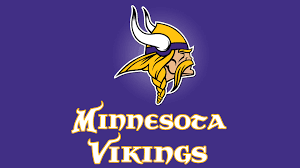
In 1977, the City of Minneapolis’s Charter was amended[39] through a ballot amendment by adding the following provision:
Section 13. Putting Professional Sports Facility Financing Before the Voters. The City of Minneapolis, Minneapolis Community Development Agency, or any city department, agency, commission, or board, shall use no city resources over $10 million dollars for the financing of professional sports facilities without the approval of a simple majority of the votes cast on the question, in a ballot question put to the public at the next regularly scheduled election. City resources are defined for these purposes as: Tax increment financing, bonds, loans, land purchase or procurement, land or site preparation, including necessary infrastructure such as roads, parking development, sewer and water, or other infrastructure development, general fund expenditures, sales tax or other taxes, deferred payments, interest free or below market interest rate loans, the donation or below market value sale of any city resources or holdings or any other free or below cots city services. The ballot question shall not be put before the public in a special election, in order to prevent the costs associated with special elections.[40]
In essence, “[S]ection [13] . . . prohibits the City [of Minneapolis] from using ‘city resources’ in excess of $10 million ‘for the financing of professional sports facilities’ unless the expenditure is approved in a voter referendum.”[41] Once again, “[S]ection [13] is only applicable if the City uses [any of its] resources to ‘finance’ a professional sports facility.”[42]
The Minnesota legislature passed 2012 Chapter 299 (the stadium legislation), which “provid[ed] for [legislation allowing] the construction and operation of a new professional football stadium on the site of the Hubert H. Humphrey Metrodome [(Metrodome)] in downtown Minneapolis[, Minnesota].”[43] Article 5, Section 6 of the stadium legislation allows certain actions “without regard to charter limitations.”[44]
Under the stadium legislation, the State will appropriate the funds needed for the public share of stadium construction and operating costs. Revenue to fund the state appropriations will come from two primary sources: lawful charitable gambling revenues (electronic pulltabs and bingo) and a portion of the local sales, liquor, lodging and restaurant taxes generated from sales in Minneapolis pursuant to Laws 1986, Chapter 396, as amended (the “local taxes”). This legislation directs the Commissioner of Revenue to retain and deposit in the state general fund that portion of the local taxes specified in the legislation for stadium funding purposes. Only the local taxes collected that are in excess of those amounts retained by the Revenue Commissioner for the stadium funding will be disbursed to the City.[45]
In a legal opinion drafted by Minneapolis City Attorney Susan L. Segal on May 21, 2012, she addressed the question of whether the financing plan for the Vikings Stadium contained in the legislature triggers or violates Section 13 of Chapter 15 of the City of Minneapolis’s Charter, which once again “provides that no city resources over $10 million may be expended for financing of a professional sports facility without a referendum.”[46] City Attorney Segal concludes that:
[u]nder the stadium legislation, the State and the Vikings will provide the financing for the stadium. The City will not issue any bonds or make any appropriations for stadium funding. The local taxes that will be used to reimburse the State for a portion of the construction and operating costs for the stadium will never be within City hands and the City will have no power or authority to direct the manner in which they will be spent. Because the funds will never enter the City treasury and will never be subject to City control, they are not a “city resource” being used by the City to “finance” a professional sports facility. Consequently, Section 13 of Chapter 15 of the Charter, the referendum section, is not triggered or violated by the funding mechanism for the Vikings stadium contained in the legislation.[47]
 Here, state legislation effectively overruled the requirement of a referendum with respect to the new Vikings stadium.[48] A 65,000 seat stadium was built on the site of the Metrodome in time for the 2016 season.[49] The Vikings were to contribute approximately $427 million, and the State of Minnesota was to use taxes from new electronic gambling devices to add $398 million.[50] Other taxes collected from “preexisting convention center sales and hospitality taxes” were to be extended by the legislature, which would have put an additional $150 million towards construction.[51] The stadium legislation assured the future of Vikings football in the Minneapolis. If a referendum had been used, the future of Vikings football in Minneapolis might have turned out differently. “A February 3 poll sponsored by KSTP-TV in Minneapolis found that a whopping 68% of Minnesota voters thought that the new stadium should be built ‘entirely with private financing.’ . . . [and] only 22% of voters believed that any tax dollars should be used at all.”[52]
Here, state legislation effectively overruled the requirement of a referendum with respect to the new Vikings stadium.[48] A 65,000 seat stadium was built on the site of the Metrodome in time for the 2016 season.[49] The Vikings were to contribute approximately $427 million, and the State of Minnesota was to use taxes from new electronic gambling devices to add $398 million.[50] Other taxes collected from “preexisting convention center sales and hospitality taxes” were to be extended by the legislature, which would have put an additional $150 million towards construction.[51] The stadium legislation assured the future of Vikings football in the Minneapolis. If a referendum had been used, the future of Vikings football in Minneapolis might have turned out differently. “A February 3 poll sponsored by KSTP-TV in Minneapolis found that a whopping 68% of Minnesota voters thought that the new stadium should be built ‘entirely with private financing.’ . . . [and] only 22% of voters believed that any tax dollars should be used at all.”[52]
Under the stadium legislation, “at least $300 million of Minneapolis taxes [that were] already devoted to paying off the [Minneapolis] Convention Center w[ould] be diverted to pay the [C]ity’s share of the new stadium.”[53] Additionally, “to [further] circumvent the requirement that voters approve funding for the stadium, [the State of Minnesota] created [a new] ‘stadium authority’ [that] would spend the [C]ity’s money, rather than the [C]ity [spending it] itself.”[54]
It should be noted that Target Field, the home of the Minnesota Twins, was also subject to the City’s spending “referendum calling for public votes on any stadium expenses over $10 million.”[55] Former “Twins owner Carl Pohlad simply went over the city’s head, to the county board, [to bypass a referendum.]”[56] The county board approved Pohlad’s request for public money in the amount of “$387 million in public debt by a 4-3 vote.”[57]
The Minnesota situation represents an example of a way that a referendum was circumvented through legal interpretation, by classifying city funds as non-city funds, and by the utilization of another vehicle or entity other than the city to distribute such funds to finance a professional sports facility.
- St. Louis Rams (Now the Los Angeles Rams)

In 1987, the City of St. Louis lost an NFL team that bore the name Cardinals to Phoenix, Arizona.[58] In response, St. Louis proceeded to build a $280 million state-of-the-art stadium to lure an NFL team back to St. Louis.[59] St. Louis welcomed the Los Angeles Rams in 1995 with a generous 30-year lease agreement for the team.[60] However, that lease gave the Rams an opt-out provision “after 20 years if it was not considered among the top 25 percent of stadiums in the league.”[61] By 2012, the Rams sought a new state-of-the-art sports facility to replace the Edwards Jones Dome, and when St. Louis failed to deliver a new stadium, it was announced by the NFL owners that they had voted in favor of allowing the St. Louis Rams to move back to Los Angeles for the 2016 season under the ownership of Stan Kroenke.[62]
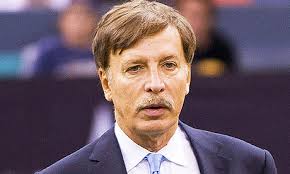 Prior to the St. Louis Rams departure, the “Regional Convention and Sports Complex Authority (RSA) [of the City of St. Louis] . . . s[ought] court clarification on what it called an ‘overly broad’ 2002 ordinance that requires a public vote to approve the use of any City of St. Louis funds for the development of special sports facilities.”[63] The RSA maintained that the ordinance “[wa]s hampering the process for crafting a financing plan to build a new NFL stadium for the Rams on the north river front.”[64] City Ordinance 66509 was at the forefront of this stadium challenge, which provides, in part, as follows:[65]
Prior to the St. Louis Rams departure, the “Regional Convention and Sports Complex Authority (RSA) [of the City of St. Louis] . . . s[ought] court clarification on what it called an ‘overly broad’ 2002 ordinance that requires a public vote to approve the use of any City of St. Louis funds for the development of special sports facilities.”[63] The RSA maintained that the ordinance “[wa]s hampering the process for crafting a financing plan to build a new NFL stadium for the Rams on the north river front.”[64] City Ordinance 66509 was at the forefront of this stadium challenge, which provides, in part, as follows:[65]
3.91.020- Procedures.
Before the City can act, by ordinance or otherwise, to provide financial assistance to the development of a professional sports facility, the following procedures must be fully implemented:
A. A fiscal note must be prepared by the Comptroller, received by the governing body, and made available to the public for at least 20 days prior to final action. The fiscal note shall state the total estimated financial cost, together with a detailed estimated cost, to the City, including the value of any services, of the proposed action, and shall be supported with an affidavit by the Comptroller that the Comptroller believes the estimate is reasonably accurate[;]
B. A public hearing must be held by the governing body allowing reasonable opportunity for both proponents and opponents to be heard. Notice of the hearing shall be published three consecutive times in two newspapers of general circulation, not less than ten days before the hearing.[66]
3.91.030- Voter Approval Required.
No financial assistance may be provided by or on behalf of the City to the development of a professional sports facility without the approval of a majority of the qualified voters of the City voting thereon. Such voter approval shall be a condition precedent to the provisions of such financial assistance. [67]
“Financial assistance” is defined in section 3.91.010.3 as
any City assistance of value, direct or indirect, whether or not channeled through an intermediary entity, including but not limited to, tax reduction, exemption, credit, or guarantee against or deferral of increase; dedication of tax or other revenues, tax increment financing; issuance, authorization, or guarantee of bonds; purchase or procurement of land or site preparation; loans or loan guarantees; sale or donation or loan of any City resource or service; deferral, payment, assumption or guarantee of obligations, and all other forms of assistance of value.[68]
“Governing body” is defined in section 3.91.010.6 as
the entity which, or official who, proposes to take action to provide financial assistance to the development of a professional sports facility. For example, ‘governing body’ includes the Board of Aldermen, the Board of Estimate and Apportionment, the Treasurer, the Comptroller, the Director of the Community Development Agency, and the Board of Commissioners of the Planned Industrial Expansion Authority.[69]
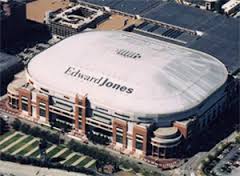 In striking down the law in August of 2015, and obviously the necessity for a referendum, the judge in the case, the Honorable Thomas Frawley, stated that sections of the ordinance are “too vague to be enforced” in his ruling.[70] “Frawley went on to state that while the ordinance is clear as to legislative intent, it provided no guidance on ‘when, how or by whom the issue of St. Louis’s financial assistance to development of the proposed new professional sports facility will be submitted to a public vote.’”[71] He also found that the words “development” and “financial assistance” as used in the ordinance were both ambiguous terms.[72] “Frawley noted in his decision there is no ordinance guidance as to what exactly will be submitted to the voters for approval[, i.e. -] carte blanche financial assistance, or must the assistance be of a specific type?”[73] Finally, Frawley “held that the Ordinance was vague as to who would be preparing any ballot measure for voter approval.”[74]
In striking down the law in August of 2015, and obviously the necessity for a referendum, the judge in the case, the Honorable Thomas Frawley, stated that sections of the ordinance are “too vague to be enforced” in his ruling.[70] “Frawley went on to state that while the ordinance is clear as to legislative intent, it provided no guidance on ‘when, how or by whom the issue of St. Louis’s financial assistance to development of the proposed new professional sports facility will be submitted to a public vote.’”[71] He also found that the words “development” and “financial assistance” as used in the ordinance were both ambiguous terms.[72] “Frawley noted in his decision there is no ordinance guidance as to what exactly will be submitted to the voters for approval[, i.e. -] carte blanche financial assistance, or must the assistance be of a specific type?”[73] Finally, Frawley “held that the Ordinance was vague as to who would be preparing any ballot measure for voter approval.”[74]
While Frawley’s decision may have paved the way to find the eventual solution for the funding of a new state-of-the-art NFL stadium for the City of St. Louis,[75] Rams’ ownership decided that St. Louis was not the ultimate home of the Rams and applied for relocation to Los Angeles with the NFL Owners.[76]
The St. Louis Rams relocation is not the only issue the City of St. Louis has been experiencing with respect to a referendum for public funding. A St. Louis investment group, who is desirous of bringing Major League Soccer (MLS) to the City of St. Louis, needed $60 million in City funding to build a state-of-the-art soccer specific stadium next to Union Station.[77] The referendum actually involved two propositions: Proposition 1 and Proposition 2.[78] These ballot measures were voted on by the City of St. Louis voters on April 4, 2017.[79] One reporter quoted the inner relationship between Proposition 1 and Proposition 2 as follows:
Proposition 2, which most people equate with funding for a soccer stadium in St. Louis, is dependent on the passage of Proposition 1, a one half of one percent (.05%) sales tax. If Proposition 1 does not pass and Proposition 2 does pass, it will not go into effect.
Should Proposition 1 pass, Proposition 2 proposes that the use tax derived from that sales tax paid by businesses on out-of-state purchases would be used for a portion of the construction costs for a multipurpose stadium for soccer, amateur sports, concerts and community events as well as minority job training and business development programs.[80]
The proposed Proposition 2 stated as follows:
Shall the use tax paid by businesses on out-of-state purchases and derived from the one half of one percent increased use tax, which corresponds to approval and levy of an Economic Development Sales Tax in the City of St. Louis, be used for the purposes of minority job training and business development programs, and a portion of construction costs, but not construction cost overruns, of a multipurpose stadium for soccer, local amateur sports, concerts and community events? A use tax is the equivalent of a sales tax on purchases from out-of-state sellers by in-state buyers and on certain taxable business transactions for which a sales tax is not levied. No taxpayer is subject to a sales tax and a use tax on the same transaction. The City shall be required to make available to the public an audited comprehensive financial report detailing the management and use of the portion of the funds each year.[81]
The public opinion polls showed support for the measure, but the voters of St. Louis had a different idea, and the referendum lost by a “53-46 percent margin.”[82] MLS spokesman Dan Courtemanche said the defeat of Proposition 2 was “clearly a significant setback for the City’s expansion opportunity and a loss for the community.”[83]
- Atlanta Falcons
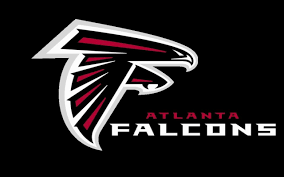
In my November 1, 2015 Sport$Biz post entitled The New Atlanta Falcons Stadium: A Continuation of the Trend Towards More Private Funding of NFL Stadiums, I looked at the replacement of the Georgia Dome with the Mercedes Benz Stadium and analyzed the private-public partnership that went into creating the possibility of a new football stadium in Atlanta.[84] As noted, the board of Invest Atlanta, the City of Atlanta’s economic development agency, voted in April of 2013 to issue more than $200 million in bonds to finalize the public contribution toward the retractable-roof stadium that opened in time for the 2017 season.[85] The bonds will be repaid from revenue generated by the city’s hotel/motel tax.[86] Atlanta’s hotel and motel tax is a lucrative funding source with hundreds of millions of dollars.[87] Both the Atlanta Tea Party and Common Cause Georgia attempted a grassroots effort to force the City of Atlanta to schedule a voter referendum as to the public contribution.[88]
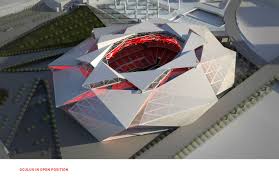 Atlanta City Attorney, Cathy Hampton, said “the loophole that Common Cause was trying to use [in order to force a referendum] was closed by the Georgia Supreme Court nearly 15 years ago.”[89] She wrote:
Atlanta City Attorney, Cathy Hampton, said “the loophole that Common Cause was trying to use [in order to force a referendum] was closed by the Georgia Supreme Court nearly 15 years ago.”[89] She wrote:
No such “loophole” exists. During a public work session on March 14, 2013, the Law Department advised the Atlanta City Council that Georgia Supreme Court case law prohibits a referendum as requested by Common Cause.
In 1998, the Supreme Court of Georgia decided the case of Kemp v. Claxton, which clearly precludes Common Cause’s ability to present this referendum. If Mr. Perry has more recent Georgia Supreme Court case law to the contrary, the City will review it. In the absence of such authority, a petition to undo the lawful actions of the Atlanta City Council is invalid.[90]
In August of 2013, “Common Cause Georgia announced . . . [that] it would be unable to gather together the 35,000 petition signatures to put the public funding portion of the stadium on the ballot by the required deadline.”[91]
- San Diego Chargers
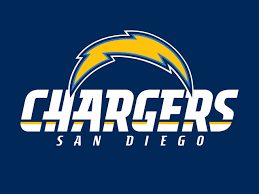
Qualcomm Stadium opened in 1967 and has been the home of the San Diego Chargers since 1967.[92] “Prior to playing at Qualcomm Stadium, “the Chargers played at least one season in L[os] A[ngeles] Memorial Coliseum in the 1960 and six seasons in Balboa Stadium – a small 34,000-seat stadium in San Diego.”[93] When it was constructed, “Qualcomm Stadium was built for $27.75 million and [also] served as the home of M[ajor ]L[eague ]B[aseball]’s San Diego Padres . . . until the Padres moved into their newly-built Petco Park in 2004.”[94] Since 1967, “there were renovations [made] to [Qualcomm] in 1984 and 1997, but the building is [still] obsolete” and not fit for a present NFL team.[95] “Without a baseball team to share [the stadium], and [with Qualcomm being one of] the oldest stadiums in the NFL, the Chargers [and the Chargers’ ownership, the Spanos family,] have spent most of the last decade trying to secure a new home for the Chargers in San Diego built specifically with football in mind” through a public-private partnership with the City of San Diego.[96]
“In November [of 2016], San Diego voters rejected [Measure C] that would have raised the city’s hotel tax to help fund a new stadium, dealing a tough blow to the franchise’s chances of staying in San Diego.”[97] Commissioner Roger Goddell in light of the defeat of public financing stated as follows:
“For more than a decade, the San Diego Chargers have worked diligently toward finding a local stadium solution, which all sides agreed was required. These efforts took on added intensity in the last two years. A year ago, NFL owners granted the Chargers an option to move to Los Angeles. Rather than immediately exercising that option, the team spent the past year continuing to work on finding a stadium solution in San Diego.
“The Chargers worked tirelessly this past year with local officials and community leaders on a ballot initiative that fell short on Election Day. That work – and the years of effort that preceded it – reflects our strongly held belief we always should do everything we can to keep a franchise in its community. That’s why we have a deliberate and thoughtful process for making these decisions.
“Relocation is painful for teams and communities. It is especially painful for fans, and the fans in San Diego have given the Chargers strong and loyal support for more than 50 years, which makes it even more disappointing that we could not solve the stadium issue. As difficult as the news is for Charger fans, I know Dean Spanos and his family did everything they could to try to find a viable solution in San Diego.”[98]
Votersedge.org, sdvote.com, and ballotpedia.org gave excellent descriptions and summaries with respect to Measure C and Measure D that would have helped to keep the Chargers in San Diego and provided some form of public financing.[99] Unfortunately both of the Measures were heavily defeated.[100] What follows are summaries from those three sites with respect to Measure C and Measure D:[101]
A. Measure C[102]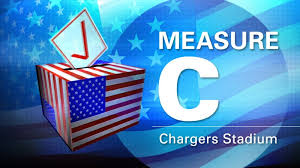
a. Downtown Stadium Initiative[103]
Should the measure be adopted to: increase San Diego’s hotel occupancy tax by 6% to build a City-owned downtown professional football stadium and convention center project, and fund tourism marketing; effect the project financing, design, construction, use, management, and maintenance, including a $650,000,000 contribution and 30-year commitment by a professional football entity; end Tourism Marketing District assessments; adopt a development ordinance, and related land use, sign, and zoning laws?
b. Fiscal Impact Statement[104]
This measure increases the City’s transient occupancy tax (TOT) from 10.5% to 16.5%. The measure eliminates the existing 2% assessment hotels charge customers to a fund a tourism marketing district (TMD).
Based on current TOT revenue projections, a 6% increase would initially generate $120 million annually. 5% of the 6% increase generates $100 million annually, and would fund construction and operations/maintenance (O&M) of a convention center/stadium facility (Facility) in the East Village. The remaining 1% generates $20 million annually for tourism marketing.
Depending on the combination of cash and TOT-supported revenue bonds used, the 5% TOT increase could provide between $1.3 and $1.6 billion for land acquisition and Facility construction. The Chargers must provide an additional $650 million for the stadium-only portion of the Facility, and enter into a lease to play at the stadium for at least 30 years.
While not stated in the measure, the Chargers have estimated Facility costs at $1.8 billion:
- $200 million – land acquisition (TOT funded)
- $600 million – construction of convention center (TOT funded)
- $350 million – construction of integrated joint use portion (TOT funded)
- $650 million – construction of stadium (privately funded)
Project expenses may be understated. Land costs could increase with needs such as retaining 1,300 parking spaces near Petco Park as required by the City’s contract with the Padres. Costs for capital infrastructure (e.g. road improvements); MTS bus yard relocation; environmental remediation; and trolley enhancements are not identified. In January 2018, funding commitments
to the Facility would adjust annually by a construction cost index. Bond financing costs may also be higher than anticipated given the possibility of rising interest rates.
Following construction, remaining TOT must fund $29 million annually in O&M and capital renewal, and a $25 million reserve. Up to 1% of TOT revenue would augment the 1% already dedicated to tourism marketing. TOT funds remaining after funding all Facility and tourism marketing costs would go to the City’s General Fund. Actual project costs, financing costs, and TOT revenue growth will significantly impact when, how much and whether any revenue would flow to the City’s General Fund. If TOT revenues cannot cover stipulated requirements in a given year, General Fund support may be necessary, reducing funding available for other public purposes.
San Diego’s current effective TOT rate (the combined TOT and TMD) is 12.5% – below the average of other comparable cities. A 16.5% TOT rate would put San Diego among cities with the highest TOT rates, potentially impacting hotel occupancy.
The 16.5% TOT rate would be reduced to 13.5% upon any of the following:
- The earlier of 50 years or full repayment of Facility bonds;
- The Chargers stop playing home games in Qualcomm Stadium for two consecutive years prior to Facility construction; or
- Specified project requirements cannot be satisfied within 10 years.
Once the TOT increase is reduced from 16.5% to 13.5%, 2/3rds of the remaining 3% TOT increase would be allocated to tourism marketing, and 1/3rd to provide ongoing support for the Facility.
c. Argument in Favor of Measure C[105]
It will be more than a football stadium.
It will be a multi-use facility that will serve as an expanded convention center, a stadium for the Chargers and a world-class events center.
It will be a home for international soccer, collegiate basketball championships, extreme sports competitions, concerts and political conventions.
The ground level will be filled with coffee shops, retail spaces, a museum and an incubator for start-up businesses.
And it will also be a spectacular site for America’s national holiday: The Super Bowl.
No new or increased taxes will be imposed on San Diego residents.
The Chargers and the NFL will be contributing $650 million in private investment.
The rest will be paid through an increase in the hotel tax paid by visitors to San Diego.
Residents of the City of San Diego who don’t stay in a hotel room in the City will not pay for the development or operation of this facility.
The City will oversee the design, construction and operation of the facility, not the Chargers.
The measure plans for a new public governing structure or Joint Powers Authority to oversee the design, construction, operation and maintenance of the new facility and manage the hotel taxes and the bonds to complete the development.
Again, no general fund dollars are designated to finance or operate any part of the project.
Even more, the initiative would relieve existing obligations at Qualcomm Stadium that are currently paid out of the general fund totaling $15 million per year.
The facility will create new local jobs.
The facility will create 17,000 jobs during its construction.
In addition, between the Chargers’ operations and other events at the facility 3,000 permanent jobs will be created in San Diego.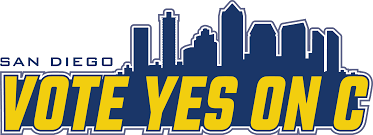
d. Argument Against Measure C[106]
Raises Taxes by More Than $1 Billion
It is a massive tax increase that should be spent on repairing streets, hiring 911 dispatchers and fully funding after-school programs. Instead of paying for those services, we would be raising taxes to help fund a rent-free stadium for Dean Spanos and his billion-dollar corporation. Measure C would be one of the largest tax increases in city history and the largest bond offering.
Does Not Require Any New Parking or Traffic Improvements
Getting in and out of Downtown San Diego is already difficult. So is finding parking. Dean Spanos’s stadium would make a bad situation worse. His tax measure exempts him from providing parking spaces required under the law. So if Measure C passes Dean Spanos would receive a special benefit. It means San Diego taxpayers would be forced to pay for parking and infrastructure to reduce traffic.
Does Not Protect San Diego Taxpayers
An independent analysis commissioned by the City found the public contribution could be $2.3 billion over 30 years. Four independent analyses all reached the same conclusion – the proposed hotel tax increase might not cover costs. The City’s Independent Budget Analyst said low hotel tax revenues could prompt the City to cover stadium costs with money normally used for public safety and other core services.
Measure C Threatens San Diego’s Tourism Economy and Jobs
Comic-Con and other large conventions are opposed to the measure. When we lose conventions, tourism declines. When tourism declines, we lose jobs, our economy suffers and tax revenues the city relies on for street repairs and other services fall.
The City has more important priorities. Vote no on a bad deal!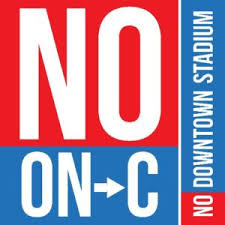
e. City Attorney’s Impartial Analysis, Excerpt[107]
The Measure also would:
- Condition use of construction funds on:
─ Contributions by a professional football entity for stadium construction and infrastructure costs up to $650,000,000. This funding can be paid in cash, using revenue from seat license sales, sponsorships or other future revenues, from construction loan proceeds, or as pre-development expenses incurred by the entity.
─ A 30-year commitment by a professional football entity to not relocate and to use the stadium on set terms.
- Authorize the City to create a non-profit corporation or joint powers authority to own and assist the City in financing, developing, constructing, and operating the Project.
- Under current law, exempt the Project from environmental review under the California Environmental Quality Act.
f. Supporters[108]
- Jerry Sanders, President & CEO, San Diego Regional Chamber of Commerce
- Carol Kim, Boardmember, Middle Class Taxpayers Association
- S. Rep. Juan Vargas (D-51)
- Nicholas Segura, San Diego Building & Construction Trades Council
- John Thomson, retired Deputy Fire Chief
g. Opponents[109]
- Haney Hong, President & CEO, San Diego County Taxpayers Association
- Julie Meier Wright, former California Secretary of Trade & Commerce
- Vice Admiral Peter Hekman
- David Alvarez, Councilmember
- Chris Cate, Councilmember
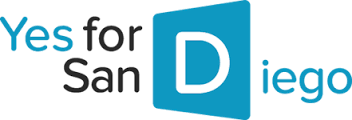
B. Measure D[110]
a. Facilities and Tourism Tax Initiative[111]
Should the measure be adopted to: among other provisions, increase San Diego’s hotel occupancy tax up to 5%; end Tourism Marketing District; allow hoteliers to create assessment districts and use hotel occupancy taxes for downtown convention center and not a stadium; prohibit contiguous expansion of existing convention center; create downtown overlay zone for convention and sports facilities; create environmental processes; and allow Qualcomm stadium property’s sale for educational and park uses?
b. Ballot Summary[112]
This measure would amend the San Diego Municipal Code to, among other things, increase the transient occupancy tax by up to 5%, and allow hoteliers to retain most of the increase as reimbursement for assessments they make to newly formed assessment districts. Assessment districts would be formed by hoteliers for development of a convention center that is not contiguous with the existing convention center in downtown San Diego, and that may be combined with a sports facility. Assessment districts could also be formed for tourism marketing.
The development area for the future convention center and sports facilities would be defined by a new overlay zone with specific development policies. Projects allowed by the new overlay zone would be subject to different environmental processes and requirements in place of state laws.
The measure would also authorize the sale of 166 acres of City-owned property in Mission Valley to one or more local colleges or universities or the San Diego River Conservancy, with certain conditions for sale and use of the property.
The tax increase provisions can be summarized as follows: If adopted, this measure would increase the City’s transient occupancy tax rate by 5% for hotels with more than 30 rooms, and for recreational vehicle parks and campgrounds, for a total tax rate of 15.5%, and by 3.5% for hotels with less than 30 rooms, for a total tax rate of 14%. These increased rates would be in effect until changed by voters.
If any of the municipal code amendments included in the measure are invalidated by a court, then the measure provides that all of the measure’s provisions would be invalid. If this happens, the tax increase likely also would be invalidated and would terminate.
This measure was placed on the ballot by the City Council after voter signatures qualified the initiative measure for the ballot.
C. Results of November 8, 2016
a. Measure C – 100% Precincts reporting[113]
| NO | 56% | 306,887 |
| YES | 44% | 237,597 |
b. Measure D – 10% Precincts reporting[114]
| NO | 58% | 303,144 |
| YES | 41% | 211,739 |
D. Commentary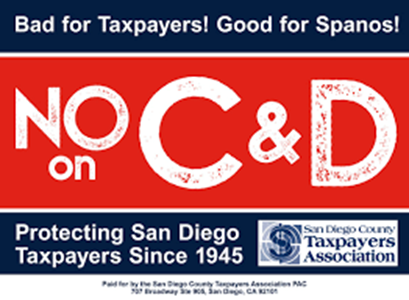
Prior to the referendum vote, polls in the San Diego area indicated strong opposition to Measure C.[115] “The poll showed more than half — 52% — strongly or somewhat opposed the measure, with another 23% not stating a preference.”[116]
(W)right on Communications, a public relations firm, also undertook a poll on August 26, 2016 and the firm announced that “of 375 county residents: 63 percent of county residents would oppose the City of San Diego funding construction of a new Chargers stadium.”[117] In addition, “two-thirds of the 63 percent would oppose any kind of public funding, even if that meant that the Chargers would move to Los Angeles.”[118]
These polls were negative even though an independent study showed that the expenditures for a stadium and convention center would have a created “significant positive [economic] impact” for the San Diego downtown area.[119] A study conducted by Hunden Strategic Partners indicated that the downtown convention center and stadium created by Measure C would result in a tremendous positive impact on the area, including the creation of “more than $750 million in new hotel revenue over the first 10 years of operation.”[120] This study also concluded:
More than 200,000 San Diego Hotel Room Nights Annually. Based on the HSP analysis, the downtown project will induce and retain more than 2,000,000 new hotel room nights for City of San Diego hotels in the first 10 years of operation and average approximately 225,000 room nights per year by stabilization. Most of these additional hotel room nights will be due to new conventions and other groups coming to San Diego that currently are not able to be accommodated. Others will be due to the impact of Chargers home games, major concerts and other sporting events to be scheduled. In total, San Diego hotel room revenue is expected to increase by more than $750 million over the first 10 years.[121]
Event Demand Leads to Major ADR (Average Daily Rate) Increases. Strong demand that pushes occupancy and rates higher and ripples out to surrounding areas generated by large events will increase hotel room revenue by nearly $200 million over the first 10-year period.[122]
Major Hotel Tax Revenue Increase. HSP expects hotel tax revenue of more than $125 million over the first 10 years solely due to the downtown project.[123]
Hundreds of New Events. The downtown project is expected to be available for non-NFL events 95 percent of days per year, leading to more than 100 events per year, nearly all of which will be new to the City of San Diego, except existing NFL and college bowl games.[124]
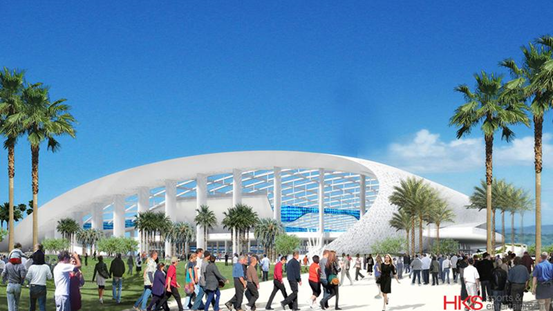 Hundreds of Thousands of Attendees. HSP estimates that the downtown project’s events will attract more than 200,000 non-sports and entertainment attendees per year and more than 900,000 total attendees per year. [125]
Hundreds of Thousands of Attendees. HSP estimates that the downtown project’s events will attract more than 200,000 non-sports and entertainment attendees per year and more than 900,000 total attendees per year. [125]
The NFL gave the Chargers an opportunity to try and resolve their stadium financing issues.[126] Measure C was the last chance.[127] With Measure C’s failure, the Chargers had the option to become a tenant at the Kroenke Inglewood facility, located in Inglewood, California.[128] The Kroenke Inglewood facility is also the future home of the Los Angeles Rams.[129]
Dean Spanos (Spanos) announced shortly after the overwhelming referendum defeat that:
“After much deliberation, I have made the decision to relocate the Chargers to Los Angeles, beginning with the 2017 NFL season,” Spanos wrote. “San Diego has been our home for 56 years. It will always be part of our identity, and my family and I have nothing but gratitude and appreciation for the support and passion our fans have shared with us over the years.”[130]
“Today, we turn the page and begin an exciting new era as the Los Angeles Chargers,” Spanos wrote in a letter on the Chargers website.[131]
“L.A. is a remarkable place, and while we played our first season there in 1960 and have had fans there ever since, our entire organization knows that we have a tremendous amount of work to do. We must earn the respect and support of L.A. football fans. We must get back to winning. And, we must make a meaningful contribution, not just on the field, but off the field as a leader and champion for the community.”[132]
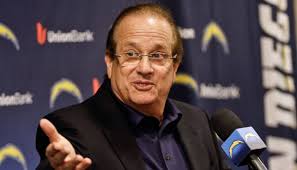 Shortly after Spanos’s announcement, the Chargers revealed that they would be headquartered in Costa Mesa, California, which is located in Orange County and roughly forty miles south of downtown Los Angeles.[133] “The Chargers will eventually play their home games roughly 40 miles north [of Costa Mesa] in Inglewood . . . [and] will also have offices at that stadium, which is under construction and expected to open in 2019.”[134] In addition, “the Chargers revealed that the 30,000-seat StubHub Center on the campus of Cal State Dominguez Hills in Carson[, California] will serve as their temporary stadium until the facility it will share with the Los Angeles Rams in Inglewood is built.”[135] In 2017, the Chargers host the Buffalo Bills, Denver Broncos, Cleveland Browns, Kansas City Chiefs, Miami Dolphins, Philadelphia Eagles, Oakland Raiders, and Washington Redskins at the StubHub Center facility.[136]
Shortly after Spanos’s announcement, the Chargers revealed that they would be headquartered in Costa Mesa, California, which is located in Orange County and roughly forty miles south of downtown Los Angeles.[133] “The Chargers will eventually play their home games roughly 40 miles north [of Costa Mesa] in Inglewood . . . [and] will also have offices at that stadium, which is under construction and expected to open in 2019.”[134] In addition, “the Chargers revealed that the 30,000-seat StubHub Center on the campus of Cal State Dominguez Hills in Carson[, California] will serve as their temporary stadium until the facility it will share with the Los Angeles Rams in Inglewood is built.”[135] In 2017, the Chargers host the Buffalo Bills, Denver Broncos, Cleveland Browns, Kansas City Chiefs, Miami Dolphins, Philadelphia Eagles, Oakland Raiders, and Washington Redskins at the StubHub Center facility.[136]
Los Angeles Mayor Eric Garcetti welcomed the Chargers in a statement:
“Los Angeles is one of the world’s great sports towns,” Garcetti said. “Championship teams and iconic athletes aren’t just memories here — they are legends woven into the fabric of our history. Today, we welcome an important part of that history back with the Chargers returning to Los Angeles.”
“L.A. already has more visitors than ever before. The Chargers will make our NFL tradition even richer, and give sports fans everywhere one more reason to be in Los Angeles. I congratulate Dean Spanos and the entire Chargers organization, and look forward to the extraordinary contributions they will make to our entire region.”[137]
On Wednesday, February 1, 2017, the Chargers terminated their lease with the City of San Diego for Qualcomm Stadium and Chargers Park, and paid an early-termination fee of $12.57 million.[138] The Chargers had until July 31, 2017 to vacate their San Diego facilities.[139]
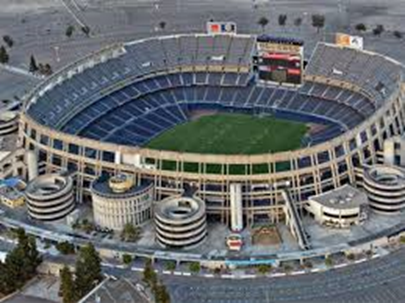 In November of 2018, San Diego voters will once again be back in the voting booth for a special election regarding the SoccerCity proposal, “a $4 billion plan to redevelop the city-owned Qualcomm Stadium site in Mission Valley with a soccer stadium, housing, retail and a river park.”[140] The hope of this project is to bring an MLS team to San Diego.
In November of 2018, San Diego voters will once again be back in the voting booth for a special election regarding the SoccerCity proposal, “a $4 billion plan to redevelop the city-owned Qualcomm Stadium site in Mission Valley with a soccer stadium, housing, retail and a river park.”[140] The hope of this project is to bring an MLS team to San Diego.
- Conclusion
The “nay-sayers” are well-prepared for referendum battles. Led by taxpayer groups and noted economists, they maintain that the use of public funds for stadiums is nothing more than sports pork. In an analysis made by “the Taxpayers Protection Alliance, a Washington, D.C. based conservative nonprofit group,” President David Williams said,
“[u]nfortunately, beneath all of the glitz and glamour, these venues are nothing more than monuments to corporate welfare and taxpayer handouts. These stadiums have been built on the back of taxpayers who had no or little say in the matter and in many cases have benefited little or not at all.”[141]
Furthermore, “there is . . . a ‘strong consensus’ among economists that publicly financed stadiums are not worth their price.”[142] Noted Economist Richard Baade said, “The public sector is underwriting most of the risk, while most of the benefits that accrue, accrue to the teams.”[143]
Now that there is a voice and a possible body of research indicating the negligible economic effects of subsidized stadium funding, “the prospects for cutting sports subsidies are [probably] not good.”[144] While there may be a growing “grassroots disgruntlement that leads to a political action against sports subsidies,” “voters [will always] cope with [the] scarcity of teams.”[145] While “[voters] may realize that subsidized stadiums regressively redistribute income and do not promote growth, they want to keep their local teams.”[146] So the reality is that “it is usually better to pay a monopoly an exorbitant prices than to give up its product.”[147]
Sports are part of the American culture, part of our life, and even if economic facts prove otherwise, most Americans do not want to lose their teams. The threat of moving a team[, i.e. – relocation] puts [communities] and their [elected officials] on the proverbial hot seat.[148] They can either ante up [the subsidy] or watch their . . . beloved team go [to a welcoming community.]”[149] In most situations, “the stark reality is that [our communities] and their leadership are mainly complicit in stadium boondoggles.”[150] In fact, “even when residents vote down these deals, they often frequently appear under the guise of stadium development authorities and other non-democratic ways of obtaining public funding.”[151]
While referendums make for entertaining politics and a form of “direct democracy” as noted above, “the majority of new NFL stadiums that have opened or been approved in the last ten years, did so without a direct public vote.”[152]
Table 1: New NFL Stadiums Constructed or Opened Since 2005[153]
| Stadium | Team | Proposed public cost (in millions) | Election? | Year Opened/
Opening |
| New Atlanta Stadium | Atlanta Falcons | $200 | No | 2017 |
| New Minnesota Stadium | Minnesota Vikings | $498 | No | 2016 |
| Levi’s Stadium | San Francisco 49ers | $114 | Yes | 2014 |
| MetLife Stadium | New York Giants & Jets | $0 | No | 2010 |
| AT&T Stadium | Dallas Cowboys | $325 | Yes | 2009 |
| Lucas Oil Stadium | Indianapolis Colts | $620 | No | 2008 |
| University of Phoenix Stadium | Arizona Cardinals | $308 | Yes | 2006 |
The Chargers loss at the ballot box for Measure C and perpetuation in the City of San Diego teaches us a good lesson: If you can stay away from a referendum, do so.
Lori Shaw is General Counsel for MegaStar Holdings and MegaStar Financial Corp. located in Denver, Colorado. Before moving to Denver, Shaw attended Marquette University Law School where she focused on Intellectual Property and Sports law. Shaw graduated with the Sports Law Certificate from Marquette’s Sports Law Program. Prior to attending Marquette, Shaw attended Indiana University in Bloomington, Indiana where she focused on History and Political Science.
[1] Referendum, Wikipedia, https://en.wikipedia.org/wiki/Referendum (last visited Apr. 7, 2017).
[2] Referendum, Merriam-Webster Dictionary, https://www.merriam-webster.com/dictionary/referendum (last visited Apr. 7, 2017); see generally Initiatives and Referendums in the United States, Wikipedia, https://en.wikipedia.org/wiki/Initiatives_and_referendums_in_the_United_States (last visited Apr. 7, 2017).
[3] Referendum, supra note 1.
[4] Id.; Initiatives and Referendums, supra note 2.
[5] See generally, Referendum, supra note 1; see generally Initiatives and Referendums, supra note 2.
[6] Referendum, supra note 1.
[7] Green Bay Packers, Wikipedia, https://en.wikipedia.org/wiki/Green_Bay_Packers (last visited Apr. 8, 2017).
[8] Green Bay Population 2017, World Population Review, http://worldpopulationreview.com/us-cities/green-bay-population/ (last visited Apr. 8, 2017); The Most Committed Fans in Football, CBS News (Oct. 2, 2014), http://www.cbsnews.com/news/green-bay-packers-smallest-market-in-nfl-but-most-loyal-fans/.
[9] Green Bay Population 2017, supra note 8; Green Bay Packers, supra note 7.
[10] Dave Anderson, Sports of The Times; Renovate Lambeau? Yes or No, N.Y. Times (Sept. 6, 2000), http://www.nytimes.com/2000/09/06/sports/sports-of-the-times-renovate-lambeau-yes-or-no.html.
[11] Id.
[12] Dennis Coates & Brad R. Humphreys, Voting on Stadium and Arena Subsidies (UMBC Econ. Dept. Working Paper No. 03-105, 2003), http://economics.umbc.edu/files/2014/09/wp_03_105.pdf.
[13] Anthony Jewell, Packers to Ask for $160 Million in Sales Taxes for Lambeau, J. Times (Jan. 22, 2000), http://journaltimes.com/packers-to-ask-for-million-in-sales-taxes-for-lambeau/article_844435e9-36bf-5841-84b4-dd3df6ec7de8.html.
[14] Anderson, supra note 10; Sarah Wyatt, Packers Will Seek Tax Increase in Brown County for Stadium, Shawano Leader (Jan. 22, 2000), https://www.shawanoleader.com/content/packers-will-seek-tax-increase-brown-couty-stadium.
[15] Jewell, supra note 13.
[16] Anderson, supra note 10.
[17] Wyatt, supra note 14.
[18] Anderson, supra note 10; Wyatt, supra note 14; Richard Ryman, Lambeau Field Sales Tax is History; Voters Pass Sales Tax to Renovate Packers’ Stadium, NewsOn6 (Sept. 11, 2000), http://www.newson6.com/story/7677548/voters-pass-sales-tax-to-renovate-packers-stadium.
[19] Jewell, supra note 13.
[20] Id.
[21] Jenny Price, Lambeau Field Renovations Gets Down to Serious Business, J. Times (May 20, 2001), http://journaltimes.com/sports/lambeau-field-renovation-gets-down-to-serious-business/article_aedcaf30-51a8-574a-98cb-1f13a8b87e30.html.
[22] Anderson, supra note 10.
[23] Robert Imrie, Collection of Half-Percent Sales Tax for Lambeau Field Begins Wednesday, Shawano Leader (Oct. 29, 2000), https://www.shawanoleader.com/content/collection-half-percent-sales-tax-lambeau-field-begins-wednesday.
[24] Anderson, supra note 10.
[25] Id.
[26] Jewell, supra note 13.
[27] Id.
[28] Wyatt, supra note 14.
[29] Martin J. Greenberg, The Stadium Game (1996).
[30] Anderson, supra note 10.
[31] Id.
[32] Id.
[33] Coates & Humphreys, supra note 12.
[34] Id.
[35] Wyatt, supra note 14; Imrie, supra note 23.
[36] Greenberg, supra note 29.
[37] Grateful Packers Continue to Say ‘Thank You’ to Brown County Voters, Packers.com (Sept. 15, 2000), http://nfl.packers.com/news/releases/2000/09/09-15.html.
[38] Major League Sport Stadium/Arena Referenda (1990-2016), Sports Facility Reports, National Sports Law Institute of Marquette University Law School (2016), http://law.marquette.edu/assets/sports-law/Referenda.16.pdf.
[39] Memorandum from City Attorney Susan L. Segal to Mayor R.T. Rybak (May 21, 2012), http://www.minneapolismn.gov/www/groups/public/@clerk/documents/webcontent/wcms1p-093312.pdf; Laura Yuen, On Stadium Deal, Minneapolis Could Bypass Referendum, Minn. Public Radio News (May 10, 2011), https://www.mprnews.org/story/2011/05/10/minneapolis-vikings-stadium-folo.
[40] Memorandum from City Attorney Susan L. Segal to Mayor R.T. Rybak, supra note 39.
[41] Id.; Yuen, supra note 39.
[42] Memorandum from City Attorney Susan L. Segal to Mayor R.T. Rybak, supra note 39 (italics added by author).
[43] Id.
[44] Id.
[45] Id.
[46] Id.; Eric Roper, Mpls. City Attorney: No Stadium Referendum Needed, Star Tribune (May 22, 2012), http://www.startribune.com/mpls-city-attorney-no-stadium-referendum-needed/152581455/.
[47] Memorandum from City Attorney Susan L. Segal to Mayor R.T. Rybak, supra note 39.
[48] David Tilsen, Why We Think the Sale of Bonds for the Vikings Stadium Is Illegal, Star Tribune (Jan. 15, 2014), http://www.startribune.com/why-we-think-the-sale-of-bonds-for-the-vikings-stadium-is-illegal/240371871/.
[49] Doug Belden, New Vikings Stadium: Not the Metrodome, TwinCities Pioneer Press (May 12, 2013), http://www.twincities.com/2013/05/12/new-vikings-stadium-not-the-metrodome/.
[50] Catharine Richert, A Closer Look at the Numbers in the Vikings Stadium Plan, Minn. Public Radio News (Mar. 1, 2012), https://www.mprnews.org/story/2012/03/01/vikings-stadium-financing-analysis.
[51] Id.
[52] Brian Frederick, Minnesota Vikings Set to Fleece Unwilling Taxpayers for New Stadium, ThinkProgress (Feb. 17, 2012), https://thinkprogress.org/minnesota-vikings-set-to-fleece-unwilling-taxpayers-for-new-stadium-183db536db2a.
[53] Id.
[54] Id.
[55] Jack Moore, No One Wants Publicly-Financed Stadiums–Except the People Who Count, Deadspin (Dec. 17, 2015), http://deadspin.com/no-one-wants-publicly-financed-stadiums-except-the-peop-1748487455; Yuen, supra note 39.
[56] Moore, supra note 55.
[57] Id.
[58] Steve Wyche, Before Coming to Desert, Cards Were Substandard in St. Louis, NFL (June 29, 2011), http://www.nfl.com/superbowl/story/09000d5d80e52e28/article/before-coming-to-desert-cards-were-substandard-in-st-louis; Rams Headed Back to Los Angeles; Chargers Have Option to Join, ESPN (Jan. 13, 2016), http://www.espn.com/nfl/story/_/id/14558668/st-louis-rams-relocate-los-angeles.
[59] Robin Respaut, With NFL Rams Gone, St. Louis Still Stuck with Stadium Debt, Reuters (Feb. 3, 2016), http://www.reuters.com/article/us-sports-nfl-stadiums-insight-idUSKCN0VC0EP.
[60] Martin J. Greenberg, A St. Louis Court Victory, But Will It Prevent the Rams Relocation?, Sport$Biz (Dec. 5, 2015), https://greenberglawoffice.com/a-st-louis-court-victory-but-will-it-prevent-the-rams-relocation/.
[61] Nick Wagoner, Rams’ Stadium Lease Now Year-to-Year, ESPN (Jan. 27, 2015), http://www.espn.com/blog/st-louis-rams/post/_/id/15761/rams-convert-lease-on-stadium-to-year-to-year.
[62] Rams Headed Back to Los Angeles, supra note 58.
[63] Greenberg, supra note 60.
[64] Id.
[65] Id.; Order and Judgement at 6, No. 1522-cc0782 (2015), available at http://media.bizj.us/view/img/6611742/stadium-ii-2015.pdf.
[66] Order and Judgement at 10; Greenberg, supra note 60.
[67] Order and Judgement at 10; Greenberg, supra note 60.
[68] Order and Judgement at 10–1; Greenberg, supra note 60.
[69] Order and Judgement at 11; Greenberg supra note 60.
[70] David Hunn, Judge Says No Vote Needed on St. Louis Stadium Funding, St. Louis Post-Dispatch (Aug. 3, 2015), http://www.stltoday.com/news/local/govt-and-politics/judge-says-no-vote-needed-on-st-louis-stadium-funding/article_51c33b67-9b72-5055-ba56-94cc9e1b46e2.html; Travis Waldron, Why Taxpayers Are Getting Shut Out of Stadium Debates, Huffington Post (Aug. 4, 2015), http://www.huffingtonpost.com/entry/why-cities-are-shutting-taxpayers-out-of-stadium-debates_us_55c0fc25e4b03e32928f7394.
[71] Greenberg, supra note 60.
[72] Id.
[73] Id.; Order and Judgement at 27.
[74] Greenberg, supra note 60.
[75] Id.; see generally, Waldron, supra note 70.
[76] Rams, Chargers, Riaders apply for L.A. Relocation, NFL (Jan. 4, 2016), http://www.nfl.com/news/story/0ap3000000617813/article/rams-chargers-raiders-apply-for-la-relocation.
[77] Brian Straus, MLS Expansion Latest: Fallout from St. Louis’s Stadium Vote Defeat, More Updates, SI.com (April 5, 2017), https://www.si.com/planet-futbol/2017/04/05/mls-expansion-st-louis-stadium-san-diego-miami-beckham-detroit-charlotte
[78] Kelly Moffitt, Pro & Con: Proposition 2, a St. Louis ballot measure, regading the use tax for stadium funding, St. Louis Public Radio (March 23, 2017), http://news.stlpublicradio.org/post/pro-con-proposition-2-st-louis-ballot-measure-regarding-use-tax-stadium-funding#stream/0
[79] Id.
[80] Id.
[81] Id.
[82] Kevin Reichard, St. Louis MLS Stadium Funding Voted Down, Soccer Stadium Digest (April 5, 2017), https://soccerstadiumdigest.com/2017/04/st-louis-mls-stadium-funding-voted-down/
[83] Id.
[84] Martin J. Greenberg, The New Atlanta Falcons Stadium – A Continuation of the Trend Towards More Private Funding of NFL Stadiums, Sport$Biz (Nov. 1, 2015), https://greenberglawoffice.com/the-new-atlanta-falcons-stadium-a-continuation-of-the-trend-towards-more-private-funding-of-nfl-stadiums/.
[85] Id.
[86] Id.
[87] Id.
[88] Max Blau, City Hall Says Stadium Referendum Isn’t Possible, Watchdog Group Continues Push, Creative Loafing (May 31, 2013), http://www.clatl.com/news/article/13073947/city-hall-says-stadium-referendum-isnt-possible-watchdog-group-continues-push; Stadium Opponents Want Referendum on Tax Spending, Savannah Now (Aug. 4, 2014), http://savannahnow.com/sports/2014-08-04/stadium-opponents-want-referendum-tax-spending.
[89] Blau, supra note 81.
[90] Id.
[91] Dave Williams, Petition Drive for Stadium Referendum Over, Atl. Bus. Chronicle (Aug. 8, 2013), http://www.bizjournals.com/atlanta/news/2013/08/08/petition-drive-for-stadium-referendum.html.
[92] Adam Stites, Everything You Need to Know About the Chargers and Raiders Relocation Saga, SBNation (Mar. 7, 2017), http://www.sbnation.com/2017/1/9/14205730/chargers-raiders-relocation-nfl-2017-los-angeles-las-vegas-san-diego-oakland.
[93] Id.
[94] Id.
[95] Id.
[96] Id.
[97] Id.
[98] Zac Jackson, Goodell: The Chargers “Worked Tirelessly” on New San Diego Stadium, Tried to Stay, NBC Sports (Jan. 12, 2017), http://profootballtalk.nbcsports.com/2017/01/12/goodell-the-chargers-worked-tirelessly-on-new-san-diego-stadium-tried-to-stay/.
[99] Measure C, Voter’s Edge Cal. (Nov. 8, 2016), http://votersedge.org/ca/en/ballot/election/area/42/measures/measure/2440?election_authority_id=43; Measure D, Voter’s Edge Cal. (Nov. 8, 2016), http://votersedge.org/ca/en/ballot/election/area/42/measures/measure/2354?election_authority_id=19; Supplemental, Important Election Information, Measures C & D, County of San Diego Registrar of Voters (2016), http://www.sdvote.com/en/measure-c.pdf; San Diego, California, Football Stadium Initiative, Measure C (November 2016), Ballotpedia, https://ballotpedia.org/San_Diego,_California,_Football_Stadium_Initiative,_Measure_C_(November_2016) (last visited Apr. 8, 2017); San Diego, California, Hotel Tax and Qualcomm Stadium, Measure D (November 2016), Ballotpedia, https://ballotpedia.org/San_Diego,_California,_Hotel_Tax_and_Qualcomm_Stadium,_Measure_D_(November_2016) (last visited Apr. 8, 2017).
[100] David Garrick, Stadium Measures Lose Badly, San Diego Union-Tribune (Nov. 9, 2016), http://www.sandiegouniontribune.com/news/elections/sd-me-election-chargers-20161106-story.html.
[101] Supplemental, Important Election Information, supra note 92.
[102] Id at 4.
[103] Id.
[104] Id. at 7.
[105] Id. at 8.
[106] Id. at 9.
[107] Id. at 6.
[108] San Diego, California, Football Stadium Initiative, supra note 92.
[109] San Diego, California, Football Stadium Initiative, supra note 92.
[110] Supplemental, Important Election Information, supra note 92, at 81.
[111] Id.
[112] Id. at 81–2.
[113] San Diego, California, Football Stadium Initiative, supra note 92.
[114] San Diego, California, Hotel Tax and Qualcomm Stadium, supra note 92.
[115] Brent Schrotenboer, Chargers Stadium Gets Only 25% Support, USA Today (Aug. 25, 2016), http://www.usatoday.com/story/sports/2016/08/25/san-diego-chargers-stadium-fan-poll-support/89305858/.
[116] Id.
[117] Don Bauder, Poll: San Diegans Don’t Want to Subsidize Stadium, San Diego Reader (Sept. 1, 2014), http://www.sandiegoreader.com/news/2014/sep/01/ticker-poll-san-diegans-dont-subsidize-stadium/.
[118] Id.
[119] Independent Study Concludes Ballot Measure C Will Have “Major Positive Impact” on San Diego and its Hotels, L.A. Chargers (Aug. 24, 2016), http://www.chargers.com/news/2016/08/24/independent-study-concludes-ballot-measure-c-will-have-major-positive-impact-san.
[120] Id.
[121] Id.
[122] Id.
[123] Id.
[124] Id.
[125] Id.
[126] Nathan Fenno, Could Chargers Get More Time to Decide on L.A. Move? It’s a Possibility, L.A. Times (Dec. 14, 2016), http://www.latimes.com/sports/la-sp-live-nfl-meetings-chargers-nfl-owners-approve-debt-waiver-to-help-1481735878-htmlstory.html.
[127] See generally Marcus Allen Krause, Rival Report 11/15: Measure C Voted Down in San Diego Pushes Chargers Closer to LA, Maybe, SB Nation (Nov. 15, 2016), http://www.silverandblackpride.com/2016/11/15/13640000/rival-report-11-15-measure-c-voted-down-in-san-diego-pushes-chargers.
[128] See generally id.; Dan McSwain, Back Story: Chargers Stadium Is Serious Business, San Diego Tribune (Oct. 16, 2016), http://www.sandiegouniontribune.com/business/columnists/dan-mcswain/sd-fi-backstory-mcswain-chargers-stadium-20161012-story.html; Mark Nero, San Diego Chargers Stadium Measure Fails Badly at the Polls, San Diego Patch (Nov. 9, 2016), https://patch.com/california/san-diego/san-diego-chargers-stadium-measure-fails-badly-polls.
[129] Dave Jobe, Chargers Leave San Diego, Join Kroenke & Rams in LA, Fox2Now (Jan. 13, 2017), http://fox2now.com/2017/01/13/chargers-leave-san-diego-join-kroenke-rams-in-la/.
[130] Chargers Announce Decision to Relocate to Los Angeles, NFL (Jan. 12, 2017), http://www.nfl.com/news/story/0ap3000000773179/article/chargers-announce-decision-to-relocate-to-los-angeles.
[131] Hannah Withlam, The Chargers’ Relocation Is Just Sad for Everyone Involved, N.Y. Post (Jan. 12, 2017), http://nypost.com/2017/01/12/the-chargers-relocation-is-sad-for-everyone-involved/.
[132] Id.
[133] Chargers Announce Decision to Relocate to Los Angeles, supra note 128.
[134] Id.
[135] Id.
[136] Id.
[137] Id.
[138] Nathan Fenno, Chargers terminate lease for Qualcomm Stadium, San Diego headquarters, Los Angeles Times (February 2, 2017), http://www.latimes.com/sports/sportsnow/la-sp-sn-chargers-terminate-lease-20170201-story.html
[139] Id.
[140] David Garrick, SoccerCity vote set for November 2018, one year later than supporters want, San Diego Union-Tribune (June 19, 2017), http://www.sandiegouniontribune.com/news/politics/sd-me-soccercity-election-20170619-story.html
[141] Travis Waldron, Taxpayers Have Spent a ‘Staggering’ Amount of Money on NFL Stadiums, Huffington Post (Sept. 10, 2015), http://www.huffingtonpost.com/entry/taxpayers-nfl-stadiums_us_55f08313e4b002d5c077b8ac.
[142] Id.
[143] Id.
[144] Andrew Zimbalist, Sports, Jobs, & Taxes: Are New Stadiums Worth the Cost?, Brookings Inst. (June 1, 1997), https://www.brookings.edu/articles/sports-jobs-taxes-are-new-stadiums-worth-the-cost/.
[145] Id.
[146] Id.
[147] Id.
[148] Richard Florida, The Never-Ending Stadium Boondoggle, CityLab (Sept. 10, 2015), http://www.citylab.com/politics/2015/09/the-never-ending-stadium-boondoggle/403666/.
[149] Id.
[150] Id.
[151] Id.
[152] News & Notes: The Electoral Prospects of a New Chargers Stadium in San Diego, Nat’l U. System Institute for Pol’y Research, http://www.nusinstitute.org/assets/resources/pageResources/NewsNotes_Chargers_Stadium_Election_Final.pdf (last visited Apr. 8, 2017).
[153] Id. at 2.


